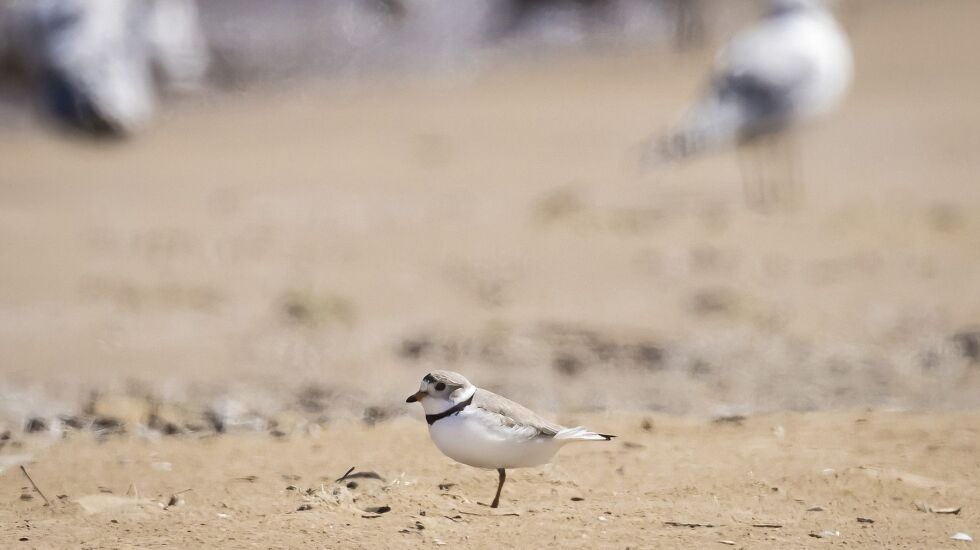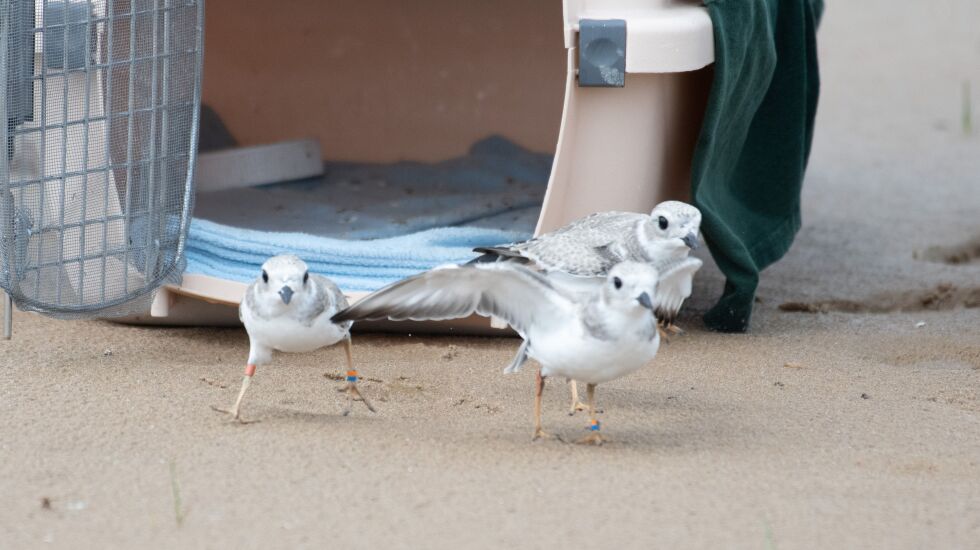
The latest piping plovers to spend their summer on Montrose Beach have left town for now, and maybe for good.
The question is, will they come back?
Imani, Searocket, Prickly Pear and Wild Indigo headed south for the winter between late last month and the first week of this month, said Tamima Itani, volunteer coordinator for Chicago Piping Plovers.
“The piping plovers spend winter in the southeastern United States and also the Bahamas and Cuba and Mexico,” Itani said.
As the four birds left one by one for warmer climates, Searocket, one of three chicks released at Montrose Beach last month, got its leg got caught in some fishing line on the beach.
Members of Chicago Piping Plovers tried to capture Searocket to remove the fishing line, but were unsuccessful.
Searocket is now at risk of losing a foot or leg — or even dying, Itani said.
“This is not the first time that birds have been harmed by fishing lines,” Itani said. “We see birds that are caught on fishing line hanging from trees, and then they hang, and they die from starvation, and it’s really tragic. It’s a horrible way to die.”

If all goes well, Itani said, all four will survive the winter and return to Montrose Beach in late April during breeding season.
Whether they survive and return depends on several factors, said John Bates, curator of birds at the Field Museum. The long journeys by piping plovers and other migratory birds can be made more difficult by human activity, he added.
“The landscapes that they’re crossing over have changed a lot over time,” Bates said. “Wind farms and other things that humans put up that make it a challenge for birds to get back and forth, to and from their wintering grounds and breeding grounds.”
This year, senior plover Imani returned to Montrose Beach at the end of April. Imani, who is 2 years old, struck out at finding a mate this breeding season — and last season, too.
Since chicks Searocket, Prickly Pear and Wild Indigo were released on Montrose Beach in July — the first time plovers raised in captivity were released in Chicago — Itani said all three have been enjoying their new home.
“The chicks would sleep in the middle of the public beach in the middle of the afternoon in the sun, just kind of lying down in the sand and sleeping, totally oblivious to everything that was around them,” Itani said.
Imani is protective of the chicks, chasing other birds from the beach, Itani said.
Since the three chicks are so young, about 2 months old now, it’s unknown if they’re male or female, Itani said. That won’t be revealed until they’re older, when they return in the spring, if they do.
Male and female plovers have distinct beak colorings and banding patterns on their heads.
“We also rely a lot on behavior, because the males act very territorial and will be chasing other males away from their territory” Itani said. “Then, of course, once they start mating [their sex] becomes very clear.”
Itani said the group hopes at least one chick is female and returns to the beach in the spring to mate with Imani, which would add an additional breeding pair to the endangered species.
Worldwide, there are less than 10,000 plovers. In the Great Lakes region, there were 80 breeding pairs this summer, Itani said. To get the birds off the endangered species list would take at least 150 breeding pairs.
“There’s still a long way to go, and we need to continue working on that recovery effort,” Itani said.
For now, Itani is encouraging people to keep Montrose Beach clean in the coming months and remember they’re sharing the beach and shore with wildlife.
“Keeping trash, fishing lines, mylar balloons [and] off-leash dogs off the beach — these are all important in these birds being able to nest and recover,” Itani said.







